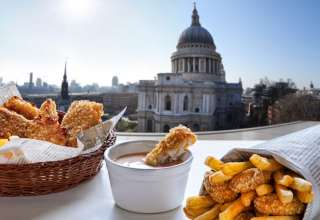There are more than 10,000 gins on the market – how on earth do you choose between them? Peter Ranscombe explores
Glance along the shelves in your local bottle shop or gaze at the optics behind any bar and it’s impossible to miss the growth of gin. What was once nicknamed “mother’s ruin” has become one of the fastest-growing spirits in the UK.
On the face of it, gin appears to be a simple drink. Very few rules govern its production: it must be made using a base spirit at 96% alcohol by volume (abv); the final tipple must be at least 37.5% abv; and it must taste of juniper. Producers can even use “nature-identical” flavourings – which is code for E-numbers that taste like juniper.
After that, distillers decide which “botanicals” will add subtle or not-so-subtle flavours. Popular choices include citrus peel for freshness, coriander seed for spice and angelica root for earthiness. Other elements range from almond and cardamom through cassia bark and cinnamon to liquorice and nutmeg.
“There are 10,000 gins in the market globally, and probably 2,000 in the UK, so you need to be distinctive – we use tea from Malawi, bergamot from Italy, English wood and hay,” says Mark Holdsworth, founder of Half Hitch Gin in London. “Technically, gin must have juniper, but after that it’s a very creative category.”
Standard “gin” usually consists of highly-rectified spirit, water and artificial flavourings, foregoing the expense of fancy botanicals. Taking a step up to “distilled gin” means the rules change, so the base spirit must be redistilled with juniper berries and any other natural botanicals. Yet artificial flavours can still be added to distilled gin before bottling.
In contrast, “London gin” or “London dry gin” follows the same production method as distilled gin, but no other flavourings or sweeteners can be added after re-distillation. While London dry can be made anywhere, “Plymouth gin” can only be made in Plymouth, and even held special protection until a change in the European Union rules in 2015.
While ingredients and techniques are important, provenance is also a factor. “Gin is the same as whisky now – the location is very much the brand,” explains Paul Currie, founder of the Lakes Distillery in Cumbria.
“Ten or 15 years ago, there were very few brands and very little interest in what was inside the bottle, but now gin has become like whisky in that it’s a hobby, it’s a passion, people are interested in how it’s made.”
Britons knocked back 41 million bottles of gin last year. The Wine & Spirit Trade Association (WSTA) dubbed it “The year of gin”, with 45 distilleries opening, taking the tally to 273.
It’s not just Brits who have developed a taste for gin either – exports are poised to hit £500 million this year, with some 140 countries snapping up the spirit. Big markets include Spain and the United States, where the popularity of shows like Downton Abbey and films including the James Bond franchise are credited with boosting gin’s appeal.
“The barriers to entry are a lot lower for gin – you can start making gin for £50,000-£100,000, while it can cost up to £2 million to start making whisky,” adds Currie. “That’s why so many more distilleries have been set up to make only gin.”
Some distilleries, like the Lakes Distillery, opened with the express purpose of making both gin and whisky, while others – such as NB Gin in North Berwick in Scotland – were created simply to make gin and related spirits. “My husband, Steve, and I picked gin because we are both passionate about the spirit,” says founder Viv Muir.
“We’ve also made vodka using the London dry process and, when our bigger distillery opens, we’ll be launching three rums later this year – a white, a fruit and a spiced – all made using the London dry method.”
Since the gin revolution began, commentators have warned of a gin “bubble”, predicting the spirit’s popularity will wane. Gin makers are undeterred, although many acknowledge there’s not enough room for every brand.
“I don’t think it’s a bubble,” argues Holdsworth. “There are more and more local gins popping up and that will always have an appeal at a local level, and there are other gins with very particular botanicals and that will protect their business because they’ll be difficult to copy.”
Five great gins

Star of Bombay
Gin drinkers will instantly recognise the Bombay Sapphire brand – this is its big brother from Bacardi Martini and won the 2016 International Wine & Spirit Competition (IWSC) London Dry Gin Trophy. There’s a more savoury or vegetal element to the gin, which works especially well when mixed with Fever-Tree naturally light tonic. £35, Waitrose, Sainsbury’s
 Isle of Harris
Isle of Harris
Scotland may be best known for whisky, but gins like Isle of Harris from the Outer Hebrides are putting it on the map for other spirits too. Its secret weapon is sea kelp, which is used as one of its botanicals and adds a minty note, along with a smoothness to the mouthfeel. Its recommended serve is with a slice of red or pink grapefruit and Walter Gregor’s Scottish tonic. £35, harrisdistillery.com/shop
 Herno Swedish Excellence
Herno Swedish Excellence
Made in the north of Sweden, Herno’s gin is full of juniper, lemon and grapefruit on the nose, cascading into warmer spicy cardamom and warm black pepper notes on the palate. The distillery scooped the Gin Producer of the Year 2016 title from the IWSC. Popular in cocktails, such as a gin fizz with lemon juice and egg white. £36.75, Amazon, Harvey Nichols
 NB Gin
NB Gin
A real crowd-pleaser, with classic juniper and citrusy lemon flavours. Made using the London dry process, with all the flavour coming from the botanicals used in the distillation process. Served in the UK at the Queen’s 90th birthday party and the Brit music awards party. Usually served with a peel of orange and light tonic water. £28.50, Master of Malt
 The Lakes
The Lakes
Subtler juniper, lemon, grapefruit and pine aromas lead on to richer lemon, lime and orange peel flavours. Crafted to be sipped over ice, with a lighter and finer feeling in the mouth. Distilled using local juniper berries, along with bilberry, heather and meadowsweet. Try chilling it in the freezer before serving neat. £29.95, Majestic Wine






